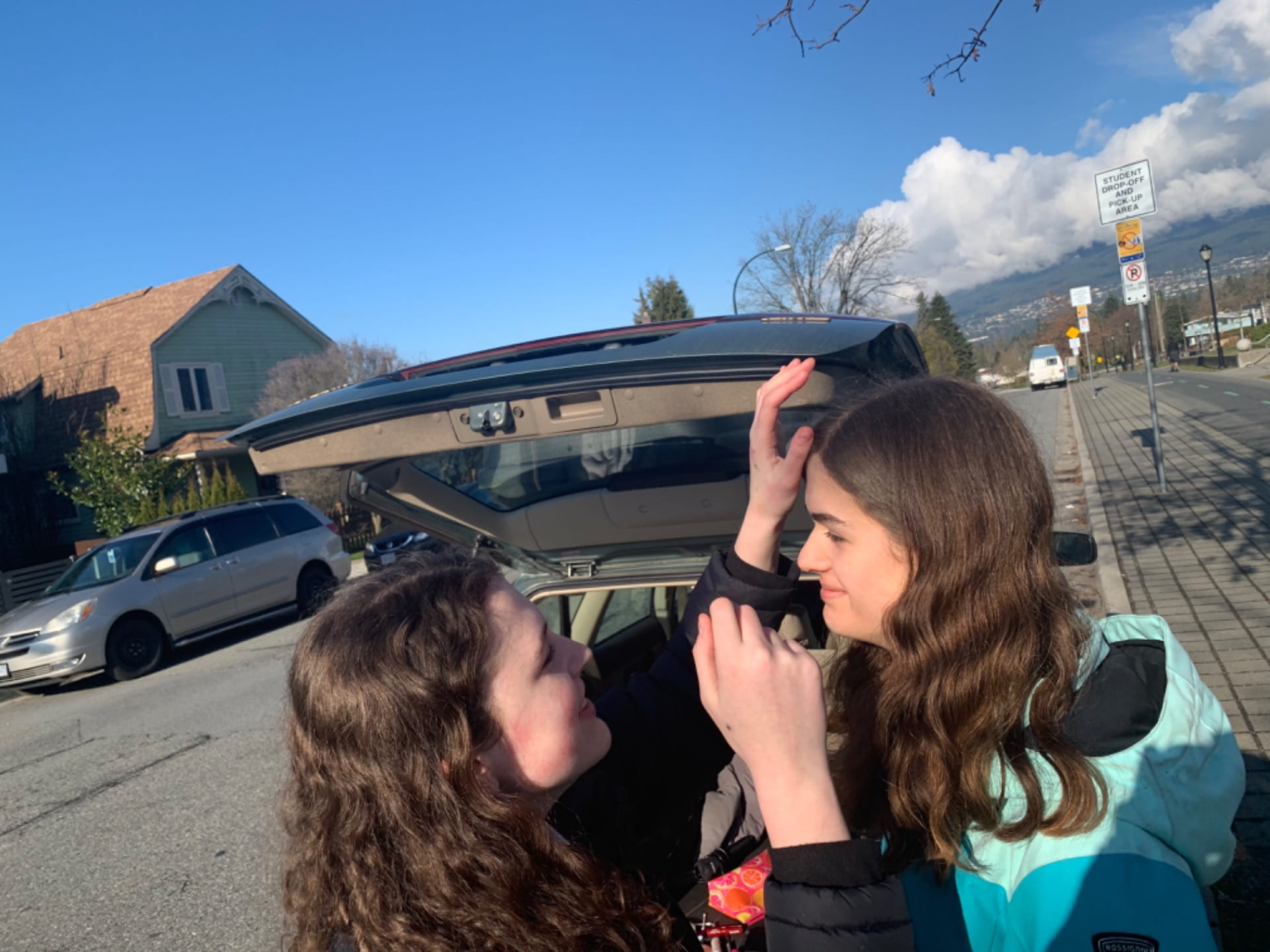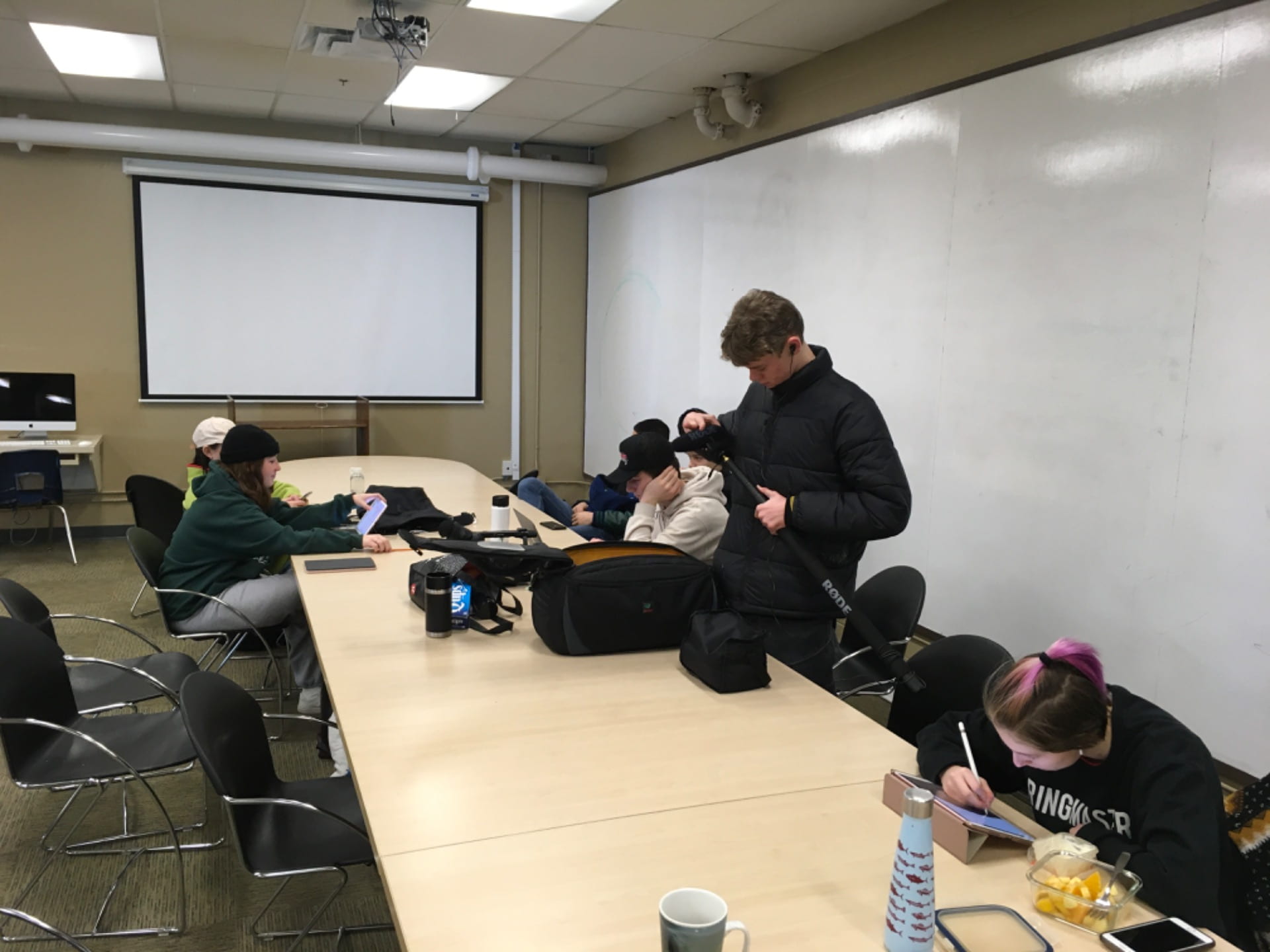Fire burn, and cauldron bubble. This unit has been nothing but trouble (just kidding!)
Over the past two to five months (depending on what you are counting), our class has been working on one of our most interesting units and ambitious projects yet; Macbeth. After convincing our teachers that we were capable, we were given our first chance to put together a full class project which would be a short film about Macbeth taking place in the 1950’s. Within it, we were tasked with commenting on the themes of appearance vs reality and what has changed and stayed the same over the time periods. On its own this is a daunting task, but throw in your lead getting sick, teachers being in another continent and a deadly pandemic sweeping the globe… well you’re in for one heck of a ride. In this post, I am going to outline our (almost) successful quest to get an answer to…


I think the main reason I was not chose to be the screen writer for this movie was because my texts often end up like informercials; just when you think they’re done…
To prevent that from happening in this post, I have decided to create a visual project timeline to explain what happened in this unit and use this post mainly for reflecting on competencies and my learning:
Using Various Sources

Like I mentioned in my visual timeline, one of the first things we did in this unit was learn how to evaluate evidence to decide if it is adequate to support a historical conclusion (e.g. the connections we made in our TWIL’s between Macbeth and the 1950’s.) We discovered that there are many tricks you can use, ranging from comparing a source against other sources to simply recognizing photoshop fails. Throughout this unit, I kept this competency in mind so that I wouldn’t turn out like King Duncan; putting absolute trust in something that would later betray him.
I made sure to utilize this in each of my TWIL posts, explaining how I analyzed the evidence I chose to write them at the bottom and providing all of my sources. I also chose to go a little meta by making my first TWIL all about analyzing evidence properly and demonstrating how someone like King Duncan who doesn’t “swim upstream” is going to get launched into an ocean of trouble (literally, in the case of my post). I also considered this competency when writing my later QUESTS, putting particular focus on adding quotes and referring to specific events to back my conclusions up with adequate evidence.
Comprehend

Something that has occurred to me in this unit is that if you do not take a moment to question what and how you are reading, it might as well all be going in one ear and out the other. Text analysis is an essential skill that allows us to not only understand the complex meaning behind words given by an author but also to interpret this meaning in news ways to recognize truths about our world and how to improve our own literary works.
At first, this competency confused me as I wasn’t sure what exactly we were supposed to be comprehending. It started to make a lot more sense however after I asked Ms. Willemse. The comprehend competency is all about identifying what literary skills you are using to interpret the meaning of texts (books, plays, films, etc.). This includes the identification of literary devices such as irony, (e.g. there’s no art / to find the mind’s construction in the face / he was a gentleman on whom I built / an absolute trust, 1.4.13-16) and paradox, making connections to other texts and breaking down hidden meanings behind metaphor and symbolism. This competency I also kept in mind all throughout the unit. All throughout our reading of Macbeth, I made sure to take careful note on literary devices such as paradox (an example being fair is foul and foul is fair). I then brought up these points in each of my QUESTS, an example being when I explore the theme of one never being able to be satisfied with unchecked ambition in my third one. I also analyzed these concepts in my TWILs. For example, my second TWIL focuses around the symbolism within the comparison of a flower vs. a serpent.
Outside of our assignments, I also worked to explore the comprehend competency. To prepare for my QUESTS I would reread a section of the play, note all the important quotes, read the tabs within the interactive text (e.g. the language tabs), and would then create documents analyzing the plot, characters and themes connected to these quotes:
Another way in which I better comprehended the text was by using the skill of habit stacking. When I was doing something mindless like brushing my teeth, I would put on a Macbeth analysis video to view perspectives other than my own. All of this work put together definitely paid off in the end as I felt in my final QUEST I had a complete comprehension of the texts I was exploring. All this knowledge was particularly useful later on when I became the competencies manager and worked to add in connections to Macbeth symbolism, imagery and themes:
Continuity and Change

At first, it seemed weird to be analyzing Macbeth and the 1950’s at the same time as they are so different, but I now realize this is what made them a creative vehicle for exploring continuity and change. Although lives and conditions over time have changed a lot (the Cold War affected a couple more people than Macbeth’s reign of terror) there are still many things that have stayed alike. For example, power hungry individuals still take positions of control and use equivocation (e.g. when Macbeth tells the murders that Banquo has “bowed you to the grave”, 3.1.96-97, without any specific proof) to manipulate others, and banding together with others who share your views is a beneficial conflict tactic used to this day.
Once again, I worked to make sure that this competency was demonstrated in my role as competency manager by discussing it with different departments. I also made sure that I didn’t miss a beat by recording the continuity and change connections I discovered during our 1950’s lectures:

Appearance vs Reality

One of the most prominent themes within Macbeth is the reoccurring concept that one’s appearance often will not match their inner reality. We see this in the characters themselves, with the witches appearing to be helpful but really trying to, as Banquo puts it, “win us with honest trifles, to betray’s in deepest consequence” (1.3.134-135), or when Macbeth makes it appear that Banquo is the scourge of their kingdom when it is in fact himself that is causing the damage. We also see this theme perpetuated by Shakespeare in his language, as he uses words like “noble” and “brave” to describe Macbeth at the beginning to make him appear like a great man when in reality he is a greedy coward. I could tell that this was an important theme because it was one that could be found in each Macbeth retelling we explored (for example, with the false dagger appearing in one of the movies but in reality just being a hallucination). Examples like these were also what led me to think of how I could represent appearance vs. reality in visual and auditory forms in our movie (e.g. the filters and differences in music I pitched).
Create

The create competency is the other side of “Comprehend”, as it now allows you to take your knowledge and utilize it to write, speak and represent your own texts. This was also the competency that drove me to want to create the role of competencies manager, as I felt the only way we could take the knowledge we gained in the comprehend stage and display it would be through doing so. As the competencies manager, like I mentioned before I worked with the screenwriter to adapt the script to better connect to the criteria of the project by adding in connections and literary devices. I also worked with other departments such as VFX, sound, production and costumes to see if there were creative ways to work competencies into their roles.
Another way I demonstrated this competency was through my TWIL posts. Each one was based around one of the competencies which we were studying (the first was around analyzing evidence, the second appearance vs reality and comprehend, and the third was based off of continuity and change). I also made sure to constantly keep these in mind during the QUESTS and whenever we took lecture notes.

To be or not to be… well I guess not to be. Although our class was determined we would be the first to complete the Macbeth movie we once again just fell short. It seemed like divine intervention was constantly taking the reigns of our project, from our lead getting sick for the only days we were planning to film to when we all got locked in our houses because of COVID-19 quarantine. I don’t think it matters though that we didn’t fully finish it, because the learning we took away was what really matters.
First of all, there were some excellent things that happened this project. We worked like a team more cooperatively than ever before and this was the first time I saw the entire class synergize to such an extent. We also all made some incredible TWIL posts that dove deep both into our creativity and ability to make connections between texts. Personally, I have also learned a ton of new skills. This is the first time I can remember in PLP history where I haven’t taken on a role of direct leadership, and it was a huge learning experience. I got to learn how to take someone else’s vision and bring it to life with my own talents while still preserving the original concept and how to act as a mediator between the departments I was working besides. I learned how to use things like common interests to facilitate conversation between different people and how to communicate problems instead of solve them myself. In the future, I think it would be a good idea for me to take more non-leadership roles to improve these skills further.
Looking back on it all, I think this project was a success for one key reason if nothing else; because I am now able to answer our driving question. We can use film to explore the theme of appearance vs. reality in a number of creative ways. We can build it into the script, into the dialogue of the characters, or use more creative means such as filters, music and costume designs to convey it further. We can also use film to comment on what has changed and what has stayed the same by using it as a medium to connect and contrast. When we want to show something that has changed (e.g. the language between Macbeth’s time and the 1950’s) we can demonstrate that by including elements that typically wouldn’t be found in that time period (e.g. calling the club “The Thanes Club”). When we want to show something that is similar, we simply can keep it intact from its original source to demonstrate how there has not been change (e.g. unchecked ambition never leading to satisfaction). Telling a story through a mix of visual and auditory means (e.g. a play or a movie) is a powerful way to explore history and make connections beyond what is obvious at first glance. We may not have succeeded in reimagining Macbeth, but in the process we learned how to reimagine the power of film and it’s incredible ability to connect the truths of our past and present.
PGP Reflection
Quarantine has been a blessing in disguise for me as I have been able to step back and truly view the bigger picture. I have had the time to move forward on things that matter to me (such as contacting relatives and improving my meditation routine) and redirect my path to better reach my goals (such as applying to more scholarships). Although I haven’t had the chance to take many big actions, each small step I make is a vote towards the kind of person I want to be in the future:


Sources:
Mabillard, Amanda. The Most Famous Quotations from Shakespeare’s Macbeth. http://www.shakespeare-online.com/quotes/macbethtopquotes.html. Accessed 31 May 2020.
Macbeth: Entire Play. http://shakespeare.mit.edu/macbeth/full.html. Accessed 31 May 2020.



























